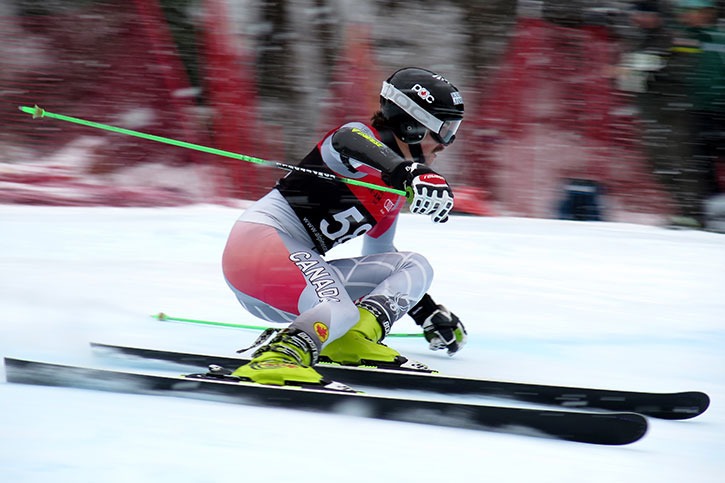The Windermere Valley Ski Club pulled together at the last minute to host a FIS (International Ski Federation) race in the final week Panorama Mountain Resort was open.
The race was to be held at Whistler and Grouse Mountains, but with poor snow conditions in both those locations, the event was moved to Panorama just three days before it was to take place, from Monday April 6th to Thursday April 9th.
“We only got notice of the race coming here on Friday (April 3rd),” said Windermere Valley Ski Club volunteer race director Dave Barlass. “Despite the short notice it was really successful. The kids were extremely happy to be here.”
The event involved two days of slalom racing and two days of GS (giant slalom) racing and drew more than 150 participants (92 boys and 63 girls) from nine countries.
The racers ranged in age from 17 to 51 (for the masters’ category), although the majority were young skiers, hoping to one day qualify for provincial or national teams.
“The kids were excited. It was great to see how happy everybody was with everything, and it was great to see the club pull together for such a short time frame,” said Barlass.
According to Barlass, it’s not the first time the club has managed to prepare to host a major event in little more than a weekend.
Panorama has a major advantage when it comes to hosting ski races, since much of the snow at the hill is manmade and is consequently less variable than snow at resorts more dependent on natural snow, such as Whistler or Grouse, he said.

“Panorama is worked as a race hill all winter, so it’s hard, it’s fast, it’s grippy and it’s consistent,” he said, adding that racers love this because it means skiers at the back of the pack still have a decent shot at a good time, because the course doesn’t get too chewed up by the end of a race.
“There’s a focus on ski racing at Panorama and it really pays off,” he said.
The race at Panorama was an important one, since it came late in the season, with racers determined to try to score enough points to qualify for various team next year, according to Barlass.

No injuries occurred during the race, which he takes as testament to a well-set course and the excellent snow conditions at Panorama.
Barlass also pointed out that the focus on ski racing is good business for the resort and for the valley. The FIS races brought not only the racers to town, but also coaches, staff, parents and volunteers — about 250 people total.
“The race certainly helped bump skier day numbers up,” said Barlass. “Racing is a great tourism driver for the ski hill, it fills a lot of beds.”
He estimated that the various alpine races held throughout the year at Panorama amount to about 2,500 bed nights at the resort.

